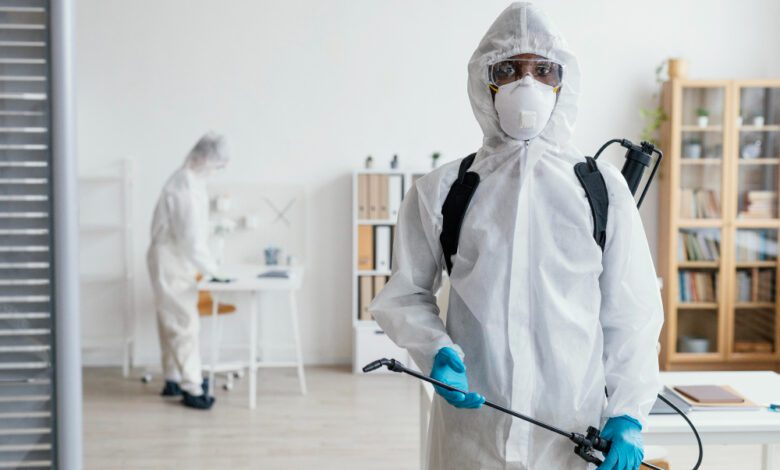The Ultimate Guide to Rodent Control: Prevention and Removal

Rodents such as rats and mice are among the most destructive pests that invade homes and businesses. They chew through wires, contaminate food, and spread diseases like leptospirosis, salmonella, and hantavirus. Effective rodent control isn’t just about eliminating existing infestations — it’s about long-term prevention to keep them from coming back. This ultimate guide covers everything you need to know about identifying, preventing, and removing rodents safely and effectively.
Understanding Rodent Behaviour
To control rodents successfully, you first need to understand their behavior. Rodents are highly intelligent and adaptable creatures. They can squeeze through holes as small as a coin and climb walls or jump several feet to reach food sources. Most rodents are nocturnal, meaning they’re active at night, which makes spotting them difficult until the infestation grows.
Rats and mice are attracted to food, water, and shelter. Once they find a reliable source of all three, they build nests and reproduce quickly — a single pair of mice can produce dozens of offspring within a few months. This rapid reproduction is why immediate action is critical once you notice signs of rodent activity.
Common Signs of a Rodent Infestation
Recognizing the early signs of a rodent problem can save you from serious damage and costly repairs. Here are the most common indicators:
- Droppings: Small, dark pellets often found in kitchens, cabinets, or near food storage areas.
- Gnaw Marks: Rodents constantly chew to keep their teeth sharp, leaving marks on wires, furniture, or walls.
- Nests: Made from shredded paper, fabric, or insulation, often hidden behind appliances or inside wall cavities.
- Scratching Sounds: Usually heard at night, especially from ceilings, attics, or walls.
- Grease Marks: Rodents leave oily smudges along walls or entry routes as they move repeatedly through the same paths.
- Foul Odor: A strong, musky smell that worsens as the infestation grows.
If you notice any of these signs, it’s time to take immediate action.
Prevention: The First Step to Rodent Control
Prevention is always more effective and safer than dealing with a full-blown infestation. Here are the best strategies to keep rodents out of your home:
- Seal Entry Points:
Inspect your home thoroughly for holes, cracks, and gaps around doors, windows, vents, and pipes. Seal them with steel wool, caulk, or metal mesh — materials rodents can’t chew through. - Proper Food Storage:
Store dry foods, grains, and pet food in airtight containers. Never leave food out overnight, and clean crumbs or spills immediately. - Eliminate Clutter:
Piles of paper, boxes, and unused items provide nesting materials and hiding places. Keep storage areas tidy and organized. - Maintain Cleanliness:
Regularly clean kitchens, dining areas, and garbage bins. Wash dishes promptly and empty trash regularly to remove attractants. - Fix Leaks and Drains:
Rodents need water as much as food. Repair leaky pipes and ensure sinks and drains are dry when not in use. - Outdoor Maintenance:
Trim trees, shrubs, and tall grass near your home. Keep firewood and garbage bins away from walls to reduce shelter opportunities.
By maintaining a clean, sealed, and organized environment, you create an unwelcoming space for rodents to invade.
Rodent Removal: Effective Methods That Work
If rodents have already found their way inside, don’t panic. There are several proven methods to remove them — from natural remedies to professional treatments.
- Trapping:
Traps are one of the most effective ways to catch and remove rodents. There are several types:- Snap traps: Quick and lethal; ideal for small infestations.
- Live traps: Capture rodents without killing them, allowing for relocation.
- Glue traps: Stick the rodent in place but are less humane and not recommended for large infestations.
- Baiting:
Rodenticides (rat poison) can be effective but should be used cautiously, especially in homes with children or pets. Always follow label instructions and place bait in tamper-proof bait stations. - Natural Repellents:
- Peppermint oil: The strong scent repels rodents; place soaked cotton balls in corners or entry points.
- Ammonia or vinegar: These odors mimic predators and can deter rodents from nesting nearby.
- Ultrasonic devices: Emit high-frequency sounds that may discourage rodents from staying in treated areas.
- Professional Pest Control:
For severe or recurring infestations, it’s best to hire licensed pest control professionals. They use advanced tools, safe products, and targeted strategies to eliminate rodents and prevent their return.
Post-Treatment Measures
After removing rodents, cleaning and sanitizing affected areas is essential. Rodent droppings and urine can carry harmful pathogens, so wear gloves and masks while cleaning. Disinfect all surfaces with a bleach-water solution or commercial disinfectant.
Dispose of contaminated materials safely, and wash fabrics that may have come into contact with rodents. If wiring or insulation is damaged, repair it promptly to avoid electrical hazards.
Long-Term Rodent Control Tips
Maintaining a rodent-free home requires consistency. Here’s how to ensure they don’t return:
- Regular Inspections: Check your home every few months for new holes, droppings, or signs of gnawing.
- Yard Maintenance: Keep vegetation trimmed and compost bins sealed.
- Monitor Food Sources: Don’t leave pet food or birdseed accessible outdoors.
- Work with Professionals: Schedule periodic pest inspections, especially if you live in an area prone to rodent activity.
Consistency in prevention is the key to long-term control.
Health Risks Associated with Rodents
Rodents aren’t just annoying; they’re dangerous. They can transmit over 30 diseases through their droppings, urine, saliva, and bites. Common rodent-borne illnesses include leptospirosis, hantavirus, and rat-bite fever. Inhaling dust contaminated with rodent droppings can also cause serious respiratory issues.
By removing and preventing rodents promptly, you protect not just your property but also your family’s health.
Conclusion
Rodent control requires a mix of vigilance, prevention, and timely action. By understanding rodent behavior, sealing entry points, maintaining cleanliness, and using effective traps or professional services, you can eliminate infestations and prevent them from returning. Remember, the key to successful rodent management is consistency — regular cleaning, inspections, and maintenance. With these strategies, you can enjoy a safe, clean, and rodent-free home all year round.




